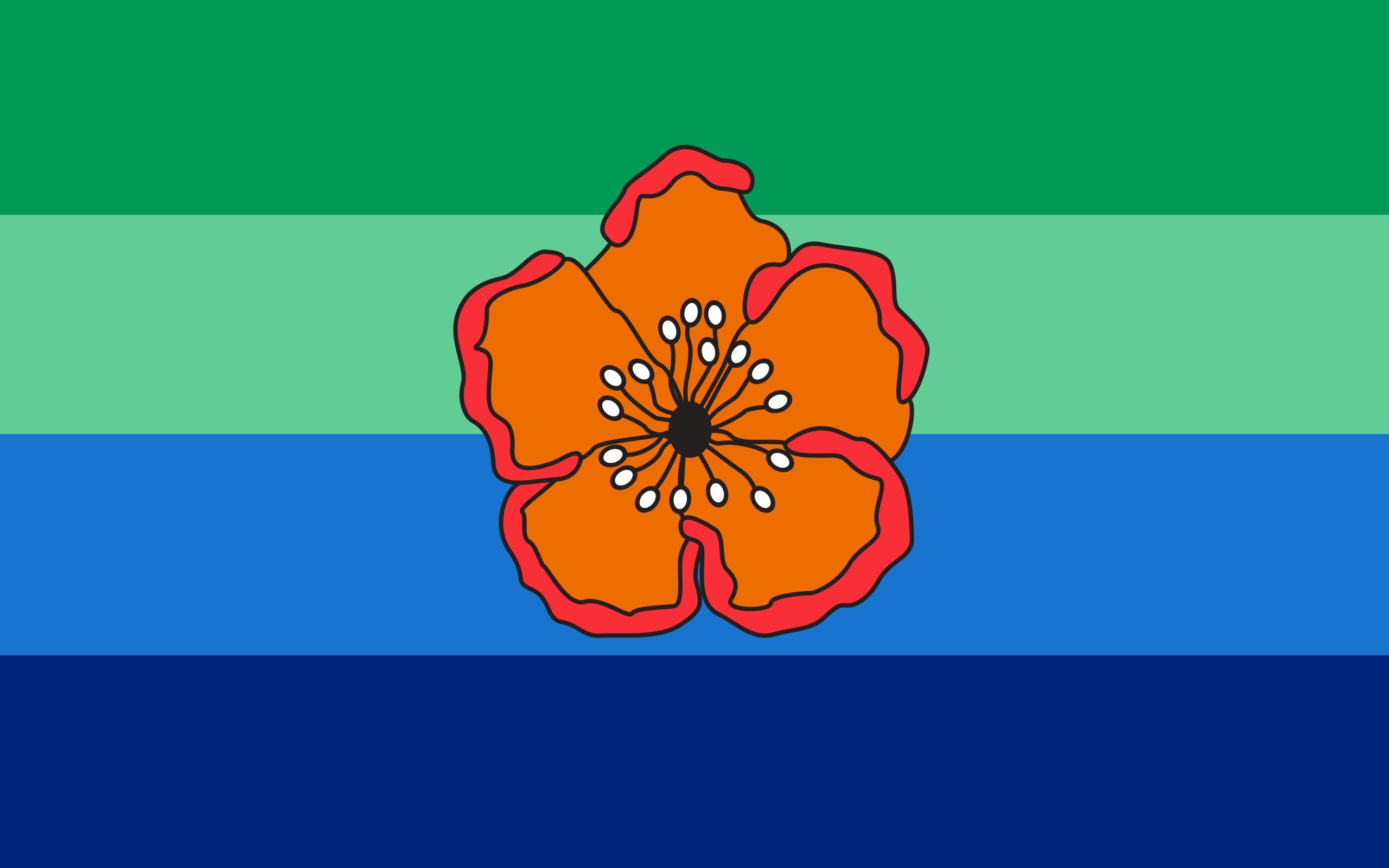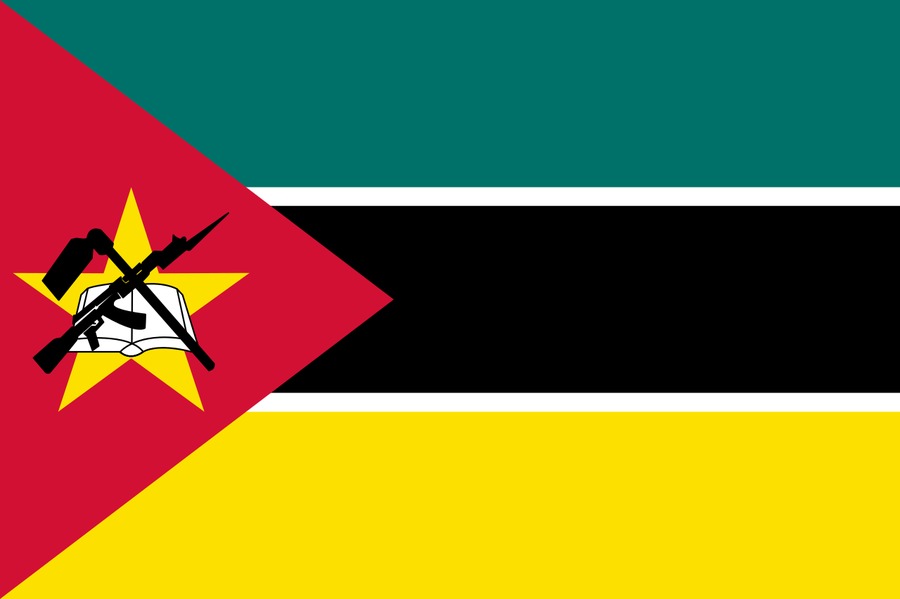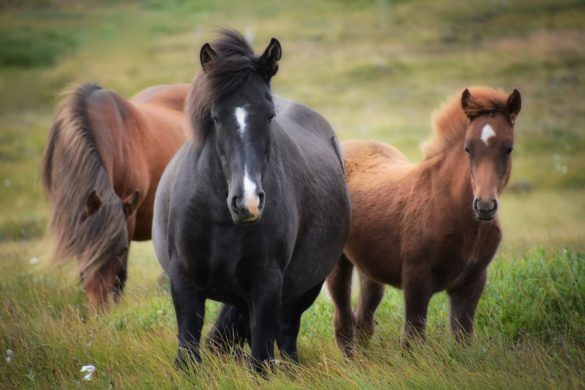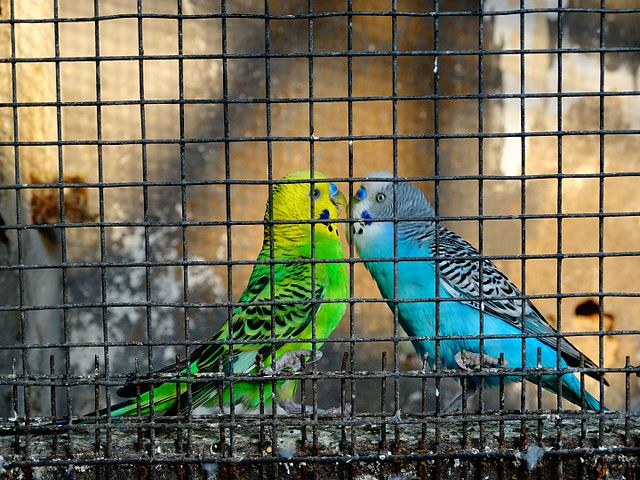National flags can tell amazing stories that rarely make their way into common knowledge. Nepal’s flag remains the world’s only non-rectangular national flag. The sort of thing I love about Mozambique’s flag is its unique combination – a hoe, an AK-47, and a book – the essential elements that built their nation. These national symbols showcase just a glimpse of the world’s unconventional flag designs.
The realm of distinctive flags reaches way beyond the reach and influence of what casual travelers might spot. Several countries showcase extraordinary designs that break traditional rules. Bhutan’s fierce dragon stands alone as the only national flag featuring this mythical creature. Afghanistan’s emblem has transformed an impressive 30 times in just one century. Many of these lesser-known national flags add unexpected elements to their designs, such as the “flaming Pétanque ball” and what looks like “clip art”. These unusual flags hide deeper cultural meanings beneath their distinctive designs.

The visual oddities that make flags stand out
The most obscure flags in the world reveal themselves through unique visual elements that grab attention right away. National banners around the world break the centuries-old rules of vexillology with their unusual shapes, colors, and symbols.
Flags with unusual shapes and proportions
Out of 193 sovereign nations worldwide, only three countries have broken away from the rectangular standard. Nepal stands as the only country with a non-quadrilateral flag. Its unique double-pennant design mirrors the majestic Himalayan peaks. The crimson-red background represents the country’s national flower, the rhododendron, and the blue border symbolizes peace.
Switzerland and Vatican City are the only two nations that proudly display square flags. Switzerland’s square format goes back to the 12th century, a time its military coats of arms adopted this shape. Qatar’s flag shows some remarkable numbers – it stretches to an aspect ratio of 11:28, making it over 2.5 times longer than tall. This makes it the most elongated national flag you’ll find.
Some other unusual proportions include:
- Belgium’s flag with its 13:15 ratio
- Niger’s 6:7 aspect ratio
- Togo’s flag, which follows the golden ratio (approximately 1:1.618)
Color combinations that defy convention
National flags’ color choices follow some surprising patterns. Red, white, and blue dominate global designs, and about two-thirds of all national flags show at least one star. Purple remains the rarest flag color, with pink coming in close second. Gray, brown, and orange appear on less than 10% of flags worldwide.
Different regions show distinct color choices. European flags tend to avoid green, while Asian nations rarely use blue. The combination of red, white, black, and green shows up mostly in Middle Eastern flags – 7 out of 11 countries in the region use this specific palette.
Jamaica stands out as the only sovereign state with a flag that doesn’t use red, white, or blue – quite remarkable given how common these colors are. South Africa’s post-apartheid flag presents another color anomaly with six different colors that blend elements from the African National Congress flag with British and Dutch influences.
Symbols that seem out of place
Some flag symbols look strangely out of place. Andorra’s tiny principality shows two bright red dairy cows with navy blue horns in its coat of arms’ bottom-right quarter. Croatia’s regional coat of arms features a running pine marten – a small weasel-like mammal that seems like an odd choice for a national emblem.
Bhutan’s flag might be the most unusual – it’s the only national flag with a “thunder dragon”. The white dragon holds four jewels or “norbu” in its claws to represent the nation’s wealth. El Salvador’s flag also stands out by showing a red Phrygian cap (a soft, conical hat) balanced on a long staff above the third of five volcanoes.
South Korea’s flag, though well-known, uses surprisingly abstract symbolism. It shows a circular yin-yang symbol surrounded by four trigrams (sets of black lines) that represent heaven, sun, moon, and earth. These unusual emblems turn simple flags into fascinating cultural stories waiting to be understood.
Flags with unexpected objects and tools
National flags often have more than just shapes and colors. Some flags showcase practical objects and tools that tell stories about their nation’s values, history, and dreams. These design elements turn simple national symbols into captivating visual stories.
Mozambique: AK-47, hoe, and book
Mozambique’s flag stands out among all weird country flags. It’s the only national flag in the world with a modern firearm. The design has a bayonet-equipped AK-47 crossed with a hoe, both placed on an open book. The nation adopted this design in 1983 to show its core values: defense, production, and education.
Each symbol on the flag tells a story about Mozambique’s path to independence. The AK-47 shows the need for alertness and defense. The hoe represents the country’s agricultural roots. The book highlights education’s role in building the nation. A gold star sits beneath these elements to show “the spirit of international solidarity of the Mozambican people”.
The flag sparked debate. A 2005 contest brought 169 new designs without the rifle. Parliament stuck to the original. Today, this bold design reminds people of Mozambique’s revolutionary past and farming heritage.
Portugal: The armillary sphere
Portugal’s flag shows an obscure national flag element – the armillary sphere. This tool helped sailors navigate during Portugal’s Age of Discoveries. The Knights Templar brought this knowledge that shaped Portuguese exploration. The sphere became a proud symbol of Portugal’s golden age.
King Manuel I ruled during the Age of Discoveries and added this tool to his banner. The sphere’s intricate design shows six edge-embossed arcs—four great circles and two small ones. These parts show the ecliptic, equator, and two meridians. The arcs meet at right angles.
This symbol means more than just sea voyages. It celebrates Portugal’s quest for new frontiers and honors the nation’s rich heritage.
Bhutan: Dragon with jewels
Bhutan’s flag catches eyes with its diagonal two-color design and white dragon holding jewels. The dragon, called Druk (the “Thunder Dragon”), comes from Bhutanese stories. People call their country Druk Yul or “Land of the Thunder Dragon”.
The dragon holds “norbu” or jewels that represent Bhutan’s people’s wealth and safety. The dragon’s white color shows pure thoughts and actions that bring Bhutanese people together. The fierce look on the dragon’s face shows how Bhutanese deities protect their nation.
Angola: Gear and machete
Angola broke free from Portugal in 1975 and created one of the most interesting flags with tools. The flag shows a yellow symbol with a machete crossing a half-cogwheel, topped by a five-pointed star.
Each part tells a story: the machete stands for farmers, agriculture, and freedom fighters. The half-cogwheel represents workers and industry. The star shows international unity and growth. These elements look similar to the Soviet flag’s hammer, sickle, and star. This shows how socialist ideas shaped Angola after colonial rule.
The yellow tools represent Angola’s mineral riches. They stand out against the red and black background. Red shows the blood shed fighting colonialism, while black represents Africa.

Cultural and historical stories hidden in obscure flags
Some obscure flags go beyond simple design choices and tell deep cultural stories. Their unusual shapes and symbols reveal rich histories that show national identity in surprising ways.
Nepal: Religion and geography in a non-rectangular flag
Nepal stands out as the world’s only country with a non-rectangular national flag. The distinctive double-pennant design means much more than just looking different. The crimson red background represents the Nepalese people’s bravery and their national flower, the rhododendron. The deep blue border shows peace and harmony.
The flag’s shape holds deep religious meaning. Many experts think it shows how Nepal’s two main religions—Hinduism and Buddhism—exist together peacefully. The triangular pennants might represent the Himalayan mountains, though some experts don’t agree.
The celestial symbols on each pennant tell an interesting story. The white crescent moon and sun used to have human faces until 1962. These symbols show permanence and hope that Nepal will last as long as these heavenly bodies. They also connect to Hindu Vedic tradition by representing the Suryavanshi (Solar) and Chandravanshi (Lunar) dynasties of Kshetriya Kings.
Kiribati: Oceanic identity and bird symbolism
Kiribati’s flag design stands among weird country flags and shows its ocean heritage beautifully. The unique flag, adopted when they gained independence in 1979, shows a frigate bird flying over a rising sun with blue and white waves below.
The frigate bird represents freedom, power, and mastery over sea and sky. These birds fly throughout Kiribati’s islands and can cover huge ocean distances. They capture the adventurous spirit of Kiribati’s people perfectly.
The three blue and white waves show the Pacific Ocean and Kiribati’s three main island groups—Gilbert Islands, Phoenix Islands, and Line Islands. This nation spreads across 3.5 million square kilometers of ocean with more water than land. The waves show how deeply connected the people are to their marine world.
Greenland: Arctic minimalism and Danish ties
Greenland’s flag shows Arctic simplicity at its best. The design splits into a white lower half for ice and a red upper half for the sun. A circle sits off-center where these colors meet and switches them—white appears in the red part and red shows in the white section.
This obscure flag shows Greenland’s special spot, not quite centered in the Arctic Circle. The off-center design nods to Nordic cross flag traditions and shows Greenland’s connection to Denmark while keeping its own identity.
Greenland’s flag stands out as one of the most interesting flags worldwide. It skips bright colors for a simple design that captures its Arctic landscape’s beauty. This proves that simple designs can make stronger cultural statements than complex ones.
Flags that challenge traditional symbolism
Most countries design their flags with simple patterns, standard colors, and conventional symbols. Several nations have created obscure flags that break these traditional rules by adding rare elements to their national emblems.
Kyrgyzstan: A flaming tunduk
Kyrgyzstan’s flag stands out as one of the most unique flags in the world. The design showcases a tündük—the central opening found in traditional yurt roofs. A yellow sun with forty evenly spread rays surrounds this distinctive symbol against a red backdrop. The tündük symbolizes the “origin of life” and represents unity of time and space while embodying “hearth and home”. Its intersecting lines symbolize harmony and connect the sky with earth. Each of the forty sun rays represents one of the forty traditional Kyrgyz tribes that the folk hero Manas united.
Dominica: A purple parrot
Purple rarely appears on national flags, yet Dominica boldly features this color. Their flag proudly displays the Sisserou parrot (Amazona imperialis)—an endangered species with just 250-350 birds left. This weird country flag came into use in 1978, with slight changes made in 1981, 1988, and 1990. The purple parrot makes this flag one of the few sovereign state flags that use this unique color. Ten green stars circle the parrot, each star representing one of the country’s parishes.
Belize: Human figures and tools
Belize’s flag stands out as the most unusual national flag. No other country shows human figures as main design elements. The flag shows two woodcutters—a mestizo and a man with African heritage. Both figures hold their trade tools—an ax and a paddle used to move trees downstream for export. The flag uses 19 different colors and shades, making it exceptionally colorful among national flags. The red stripes at the top and bottom represent both major political parties’ colors, added when Belize gained independence.
Haiti: A full coat of arms with weapons
Haiti’s obscure flag breaks convention as one of just four UN member states’ flags that show a gun. Blue and red horizontal bands frame a central white panel with Haiti’s complete coat of arms. This detailed emblem shows a trophy of weapons on a green hill, a royal palm that represents independence, and the Cap of Liberty. The national motto “L’Union fait la Force” (“Unity makes strength”) appears below these symbols.
Why these obscure flags matter more than you think
Obscure flags mean much more than just colorful fabrics waving in the wind. These powerful visual contracts between nations and their citizens run deeper than mere looks.
They reflect national identity in unique ways
A country’s flag symbolizes its identity, sovereignty, and unity. These visual emblems capture shared history, culture, and values that create a deep sense of belonging. We used them to represent a nation’s history, values, and aspirations on the world stage. The ceremonies and traditions around flags at national events strengthen this bond. These unique flags tell the world who we are and what matters to us as a people.
They preserve cultural heritage and local pride
People have used flags to express themselves for at least 1000 years. They stand as markers of identity and keep cultural traditions and historical moments alive through visual storytelling. The Welsh dragon shows us this perfectly – it connects to the country’s medieval past and Arthurian legend. Studies in history, art, political science, and cultural anthropology become richer with flag knowledge. Museums display these obscure national flags as cultural treasures during special ceremonies.
They challenge the idea of what a flag should be
Flag designs can change. New values and historical moments reshape flags as political landscapes change and revolutions unfold. Weird country flags show us how creative design can be. A flag’s success depends on whether people accept it. New Zealand’s Silver Fern design proves this – citizens love it even though it’s not official. Some designers believe we should look at flags every 20-25 years to keep them meaningful.
Summing all up
Flags are powerful symbols that exceed mere cloth and color. Our exploration of obscure flags shows how these distinctive national emblems tell rich stories about cultural heritage, historical struggles, and collective aspirations. Without doubt, the most fascinating flags break conventional design rules. Nepal’s non-rectangular pennant, Mozambique’s practical tools, and Bhutan’s fierce dragon represent bold departures from tradition.
These unusual designs serve a purpose way beyond esthetics. On top of that, they act as visual contracts between nations and citizens and create shared identity through distinctive shapes, rare colors, and unexpected symbols. Portugal’s armillary sphere celebrates maritime achievements, while Kiribati’s frigate bird soars as proof of oceanic identity. Arctic beauty shines through Greenland’s striking simplicity and minimalist approach.
National flags preserve cultural heritage and challenge our expectations. Dominica’s purple parrot, Kyrgyzstan’s flaming tunduk, and Haiti’s coat of arms show how flags evolve as living expressions of national character. These visual anomalies then become powerful tools that help us understand global diversity.
These obscure flags teach us that national symbols often hide fascinating stories beneath their surface. Strange shapes, uncommon colors, or curious emblems likely represent centuries of history, cultural pride, and collective identity. The weirdest flags often tell the most compelling national stories.
Here are some FAQs about obscure flags:
What is the most obscure flag?
The flag of the Cocos (Keeling) Islands, an Australian territory, ranks among the most obscure country flags due to its limited use and recognition. Other obscure national flags include those of tiny island nations like Niue or the seldom-seen flag of Saint Pierre and Miquelon. These most obscure country flags rarely appear in international settings or public awareness.
What color is 75% of all flags?
Red appears in approximately 75% of all national flags worldwide, making it the most dominant color. This prevalence spans from prominent flags to obscure country flags across different continents and cultures. Even among obscure pride flags and most obscure country flags, red remains a frequently used color symbolizing various meanings.
What country has a unique flag?
Nepal has the world’s only non-quadrilateral national flag, shaped as two stacked triangles. Among obscure national flags, the flag of Sicily featuring a triskelion and Medusa head also stands out for its unique design. These differ dramatically from both common national banners and most obscure country flags with conventional shapes.
What is the hardest flag to recognize in the world?
The flag of Belize is considered particularly hard to recognize due to its complex coat of arms featuring numerous elements. Among obscure country flags, those of Central Asian republics like Turkmenistan with intricate patterns also challenge identification. These most obscure country flags often incorporate detailed symbolism unfamiliar to most observers.
What is the most obscure country?
Tuvalu is frequently cited as one of the most obscure countries, with its flag being equally little-known. Other nations with obscure national flags include Kiribati and Nauru in the Pacific. These most obscure country flags represent microstates that rarely appear in global affairs or public consciousness.
Are there 254 flags?
There are approximately 254 national flags when counting all UN member states, observer states, and dependent territories. This count includes both well-known banners and obscure country flags of small island nations. The number encompasses everything from prominent national symbols to most obscure country flags of micronations.
What’s the rarest color on a flag?
Purple is the rarest color on national flags, appearing on only a handful including Dominica and Nicaragua. Even among obscure pride flags and obscure national flags, purple remains exceptionally uncommon due to historical dye costs. This scarcity makes purple the least represented hue across most obscure country flags worldwide.
What is the oldest flag in the world?
Denmark’s Dannebrog is considered the oldest continuously used national flag, dating back to 1219. While not among obscure country flags, its longevity surpasses even ancient banners like Scotland’s Saltire. Most obscure national flags tend to be much newer creations from recently formed nations or territories.








